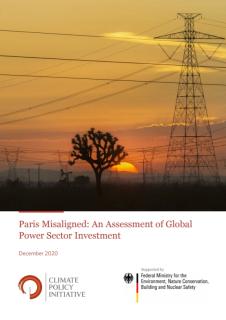
Leaders will soon commemorate five years of the signing of the Paris Climate Agreement for global climate action, wherein nations agreed to keep temperature rise well below 2°C and pursue even more effort to limit it to 1.5°C. Article 2.1c of the Agreement calls for “finance flows [to be made] consistent with a pathway towards low greenhouse gas [GHG] emissions and climate-resilient development,” which would require all financial actors (financial institutions, corporations and governments) to align their practices, investments, and portfolios with climate goals, mitigate all risks related to climate change, and seize opportunities for growth through climate-smart investment.
Complying with the Paris Agreement and net-zero emissions targets means adjusting decision frameworks to account for climate change risks, including physical, transition, and liability risks. Much of this effort will need to be within power, transport, and other sectors with high-emissions intensities driven by the existing asset fleet. We also need to understand how activities across individual institutions and diverse sectors of the economy ‘add up’ to achieve necessary levels of sector, country, regional, and global decarbonization.
Since 2010, Climate Policy Initiative has been tracking sustainable investment annually in its Global Landscape of Climate Finance. Now, CPI builds on this work to provide first-of-its-kind insight into high-emissions finance and investment alignment in a series of three papers:
- Improving Tracking of High-GHG Finance in the Power Sector investigates methods and available data for tracking high GHG emissions finance at the project level. It brings together the best of these to present, for the first-time, granular information on financing sources, instruments, destinations, and technology uses for high-emissions power plant projects for the years 2017/18.
- A Proposed Method for Measuring Paris Alignment of New Investment outlines a science-based methodology for understanding how new investment tracks to IEA global warming scenarios and emissions budgets. This methodology attempts to arm policymakers and investors with a new methodology for understanding whether new investment is contributing sufficiently to 2030 targets under the Paris Agreement, within specific sectoral/geographical contexts.
- Paris Misaligned: An Assessment of Global Power Sector Investment presents the results from applying this methodology to best available data for the global power and U.S. transport sectors for the year 2018; discusses the implications of these results for the power sector; and outlines possible solutions to be undertaken by public and private financial actors, as well as regulators and service providers.
Click here to view Paris Misaligned Joint Summary.
